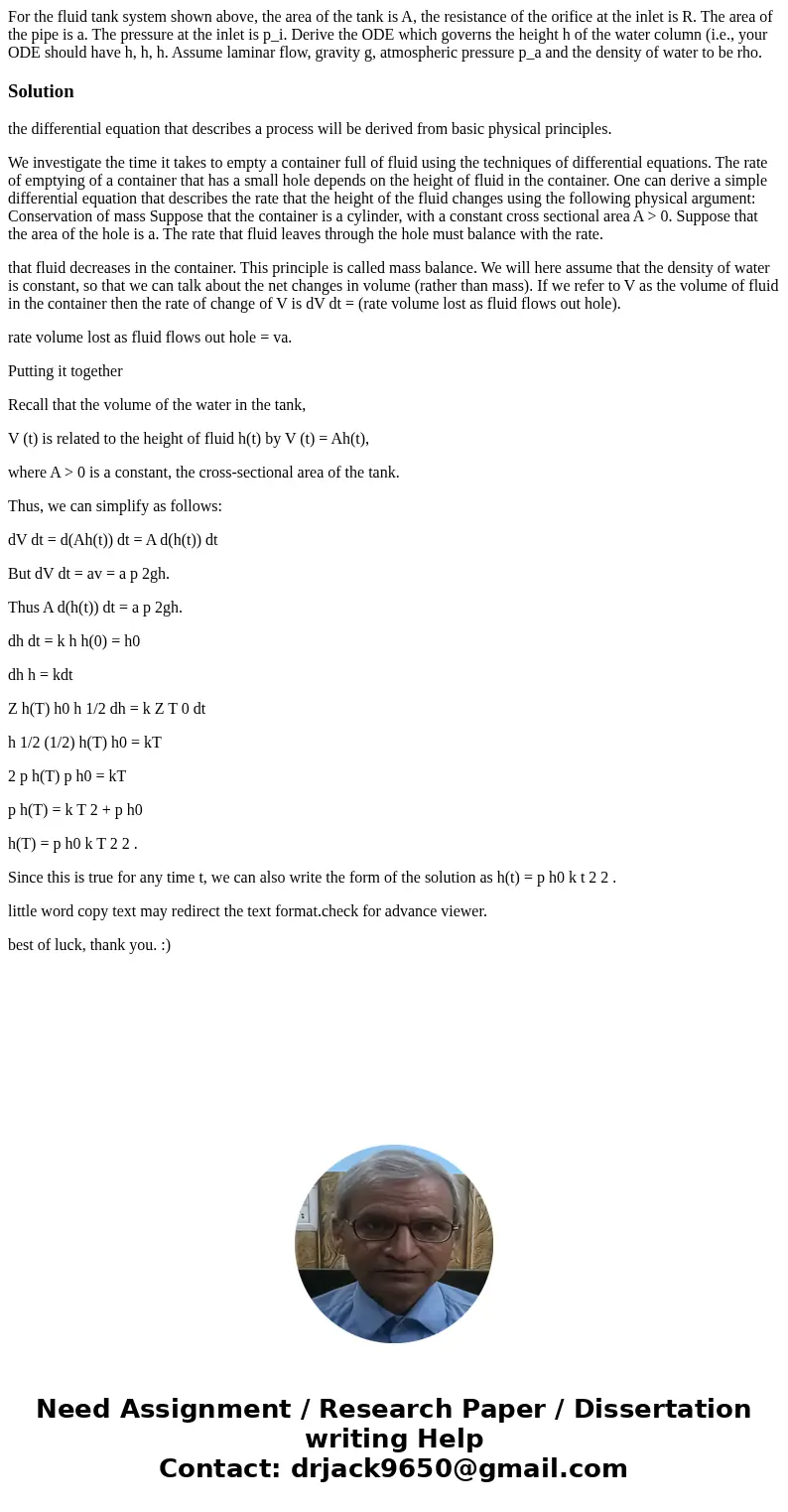For the fluid tank system shown above the area of the tank i
Solution
the differential equation that describes a process will be derived from basic physical principles.
We investigate the time it takes to empty a container full of fluid using the techniques of differential equations. The rate of emptying of a container that has a small hole depends on the height of fluid in the container. One can derive a simple differential equation that describes the rate that the height of the fluid changes using the following physical argument: Conservation of mass Suppose that the container is a cylinder, with a constant cross sectional area A > 0. Suppose that the area of the hole is a. The rate that fluid leaves through the hole must balance with the rate.
that fluid decreases in the container. This principle is called mass balance. We will here assume that the density of water is constant, so that we can talk about the net changes in volume (rather than mass). If we refer to V as the volume of fluid in the container then the rate of change of V is dV dt = (rate volume lost as fluid flows out hole).
rate volume lost as fluid flows out hole = va.
Putting it together
Recall that the volume of the water in the tank,
V (t) is related to the height of fluid h(t) by V (t) = Ah(t),
where A > 0 is a constant, the cross-sectional area of the tank.
Thus, we can simplify as follows:
dV dt = d(Ah(t)) dt = A d(h(t)) dt
But dV dt = av = a p 2gh.
Thus A d(h(t)) dt = a p 2gh.
dh dt = k h h(0) = h0
dh h = kdt
Z h(T) h0 h 1/2 dh = k Z T 0 dt
h 1/2 (1/2) h(T) h0 = kT
2 p h(T) p h0 = kT
p h(T) = k T 2 + p h0
h(T) = p h0 k T 2 2 .
Since this is true for any time t, we can also write the form of the solution as h(t) = p h0 k t 2 2 .
little word copy text may redirect the text format.check for advance viewer.
best of luck, thank you. :)

 Homework Sourse
Homework Sourse